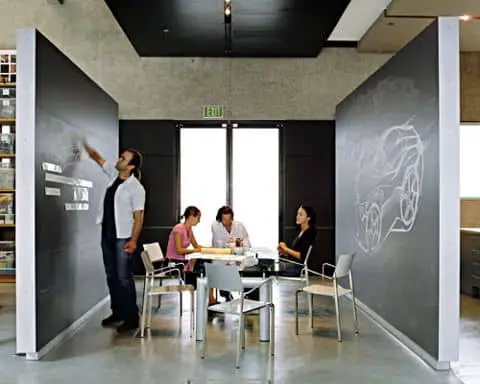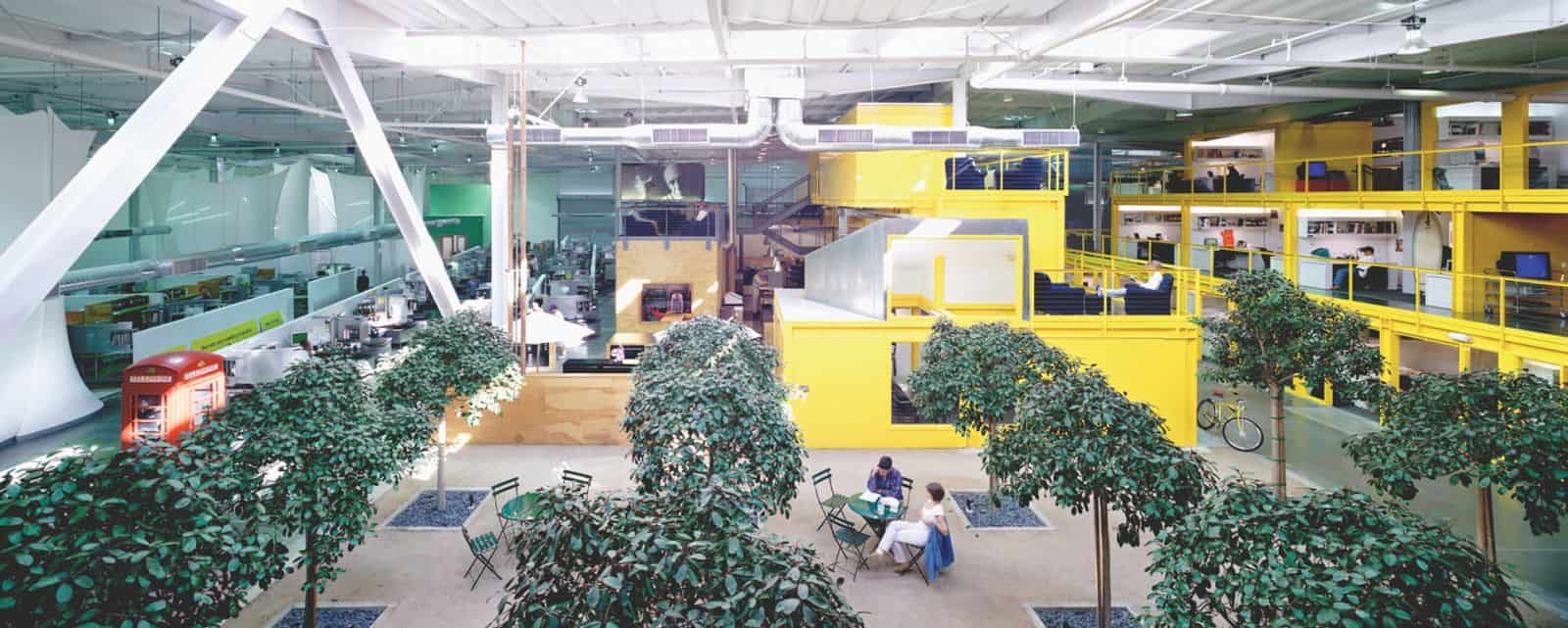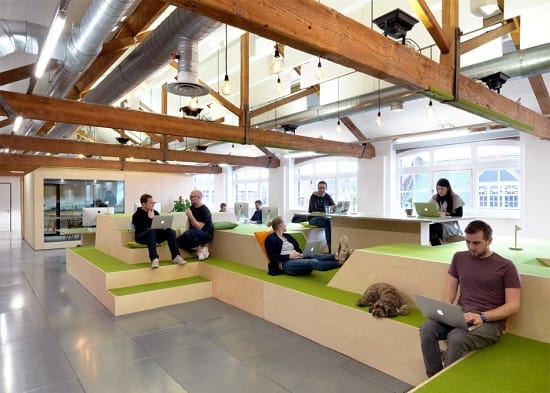Last week, my team leader organized an outing for all of us. We went for a picnic close by and had a lovely day full of friendly, informal interactions which refreshed us greatly. We returned to work with renewed vigour, and that made me realize how important motivation is for employees to perform well and enjoy their work- as well as the various things that can be done to increase motivation.
So, what are some simple ways to increase motivation in the workplace? On the employer’s part, a few things the company and managers can do to motivate employees include taking feedback regularly, giving rewards and recognition, etc. Employees can motivate themselves by participating in all office activities, forming friendly relationships with colleagues, and so on.
Nowadays most individuals spend the majority of their day, at least five days a week, in the office space, working. Thus, people have many opinions and differing perceptions of their workplace. Due to stress and long working hours, many employees feel tired and find themselves lacking in motivation and enthusiasm to continue, and to deliver their best performance. If managers motivate and encourage their employees, it will also increase the employee’s attachment to the company and will ensure they stay on for longer, as compared to less motivated employees who would leave as soon as they had the chance, resenting stagnation.
To ensure that employees feel energized and keen to continue working for the company, it is necessary to keep them motivated and driven in their attempts. It is important to understand that motivated employees never fail to give their best and also go home every day satisfied with their workplace. Many companies misunderstand the concept of motivation to be limited merely to monetary incentives and promotions, but in reality, motivation is far beyond money and material assets, concerned more with employee satisfaction and happiness at the workplace.
.jpg)
Why is workplace motivation important?
Before discussing some ways and means to increase motivation in the workplace, it is useful to consider the precise role and importance of such motivation for employees. As it is, the act of going to work every day, performing routine tasks, can be quite monotonous sometimes and can feel irritating. In such a case, it is necessary to find ways to motivate employees at the workplace to boost performance as well as mood. Not only does motivation serve in bettering employees’ performance, but it also builds an atmosphere of positivity, cordiality and high energy in the workplace. Moreover, motivated employees will also find it easier to put in effort even for the toughest tasks and will be able to face many hurdles gracefully.
In the long run as well, motivation is particularly important for both the employees as well as the organization. Employees who experience motivation and hence, fulfilment at their workplace, are likelier to stick around at the company rather than leaving quickly for better opportunities. This will directly benefit the organization as the employees they have will be gainful, productive and yield great results throughout the years. Thus it is good for employers to do things that motivate and inspire their employees, as well as for employees to motivate each other and themselves continually.
and yield great results throughout the years. Thus it is good for employers to do things that motivate and inspire their employees, as well as for employees to motivate each other and themselves continually.
25 Ways to Enhance Motivation in the Workplace
Professionally, there are some methods to motivate employees that most companies agree upon. These include appraisal, promotion, raise in salary and other compensation. However, these are largely formal measures. There is a lot more beyond this that can be done regularly and on an informal level to motivate employees. These measures consist of the following, among many-
1. Reward system– Apart from official rewards and recognition, there should also be informal acknowledgment and recognition at the workplace. Everyone wants to be appreciated and praised for their good work, and so do employees. Employers are advised to observe instances of hard work or good performance by employees and appreciate them verbally and/or by email from time to time. As an employee, you can do your bit to motivate your colleagues by pointing out their good work as well. To motivate oneself at work, one should also not forget to reward and incentivize their own selves for completing a difficult task.
2. Physical wellness– It is said that all work and no play make Jack a dull boy, and the same is true for employees in a workplace. The workplace and associated tasks come with their own set of pressures, so to relieve that stress and motivate employees; it is recommended that offices should have a gym or recreation area where activities such as yoga, Zumba and aerobics can be practised. Employers should encourage their employees to partake in physical exercise to relieve stress and motivate them to take care of their health, so that they also perform better at work. As an employee, you will find that exercise such as dance, yoga, cardio, will boost your stamina and revitalize you, providing motivation to you at work.
and motivate them to take care of their health, so that they also perform better at work. As an employee, you will find that exercise such as dance, yoga, cardio, will boost your stamina and revitalize you, providing motivation to you at work.
3. Appropriate allocation of work– One misconception many employees and managers as well hold is that taking on a large workload shows sincerity, hard work, enthusiasm as well as skill. However, taking on too much work will bog you down, drain your energy, create confusion and will prevent you from giving your best, which serves as a de-motivator ultimately. Being unable to finish all the work or finishing it in a less than optimal manner would make one feel like they are not very adept and cause severe de-motivation.
Thus, as an employee, avoid taking more work than you know you can do at a time. Speak to your manager or superior and chalk out your Key Responsibility Areas, explaining your capacities and coming to an agreement. Similarly, if you are a manager, you can simply assess your employee’s capabilities and assign work accordingly.
4. Stay organized– A complement to taking up an appropriate workload is the habit of staying organized. As an employee, it is advisable that you make a daily to-do list in a planner, if you like, or on post papers you can stick at your desk. Organizing your tasks neatly, preferably putting tasks of urgency higher on the list and ticking them off as you finish them, will help you get the work done easily and will also motivate you to finish the rest of the tasks well. An optional pointer is that you can use colourful pens, markers and paper to note these tasks down, as colour coding can serve as a great differentiator and may also brighten your mood. Staying organized is a must for motivation, both for high ranking managers as well as for junior staff, as it makes one feel that they are on top of things and not struggling.
5. Remember to take breaks– As mentioned before; there is a certain monotony that can set in to daily activities. Office life is no different. As most work today is largely sedentary, remember to get up and take a break. It’s a good idea to go out and get some fresh air, which will not only energize you, but will also help motivate you to get back to work. Moreover, a break does not necessarily mean going out. You could always walk around the office, get some tea or coffee, chat a bit with a colleague, listen to some music or read something.

6. Separate work timings from time spent in leisure– What one often forgets or overlooks in the daily routine is taking out time for their very own selves. It happens many times that one has to take office work home due to spill over. That cannot be helped, but you must remember to allot some time to your own personal relaxation, be it an hour, or more if you can afford it. At the very least, try to put aside half an hour to forty five minutes on weekdays and devote it to doing something you enjoy- reading, watching television, etc. In the time reserved for these leisure activities, try not to let work come in between. Thus, when you go to work the next day, you will be fresh and motivated.
7. Seek feedback and advice– Asking for feedback is a good idea at work, since it lets you know where you need improvement, as well as all the areas you, as an employee or manager, excel in. Such feedback is an excellent motivator- if you get suggestions on where to improve, it’ll motivate you to work harder in those areas, and positive reinforcement will give a feeling of accomplishment. For employers and senior managers, it is advised that feedback and constructive criticism be delivered with compassion, consideration and useful advice that motivates the employee and helps them grow professionally as well as individually.
8. Build lasting relationships– The workplace becomes an even more engaging place to spend the majority of the day when one has friends and like-minded people to talk to and spend some time with. There is already a lot in common between people who work in the same office, so it’s a good idea to bond with colleagues and have meals with them. These friendships will provide motivation to come to work and perform tasks every day, because of the interactions in between, and will also boost the mood.
9. Remind yourself to learn from failure– When something goes wrong, particularly at work, and it was your mistake, don’t sit down and despair over it. Rather, learn from the error you made and make sure it does not happen again. If you are making particular errors each time with a certain task, ask your colleagues and/or manager for advice on how to rectify it rather than giving up and feeling de-motivated- you would be surprised how many people are willing to assist rather than judge. Remind yourself of all the struggles you have overcome in the past and let your past successes motivate you to perform well at work.
10. Step out of your comfort zone– While this may seem counter-intuitive to motivation, it really is not. It is a good idea to challenge oneself in the work sphere by taking up new tasks and new projects which demand out of the box thinking and creativity. If there are new skills to learn, try your hand at those. Learning new things and overcoming challenges will motivate you at your workplace and will ensure you are ready for future tasks. If you are in a managerial position, encourage your team to take up new and challenging tasks. Encourage them and guide them if they get stuck with something, so that they feel motivated by the entire process. (We have written a related article – 26 Workplace Wellness Activities You Can Implement Today )
)
.jpg)
11. Alter your mindset– It has been proven that our psychology has a lot to do with the way we do things and react to circumstances and situations. If you perceive any task as difficult, boring or tiresome before even attempting it, your mindset will negatively affect the task in question and you will lack motivation to complete it. Since you have already perceived the task in a negative light, very little can change your mind when you start working on it and that will likely ruin the outcome. Instead, look forward to even the most tedious work. Head into every task and project with a positive mindset and tell yourself good things about it: that it will be easy and fun to go about. This will give you the required motivation and energy for every task.
12. Think long-term– Sometimes we tend to lose sight of the light at the end of the tunnel. We forget why we are doing something and what we hope to achieve by doing so. When you feel low or de-motivated at work, remember what first inspired you to start working at the company, or for that particular project. Assess whether, over time, these goals or aims have changed and how that change reflects itself in your work. Once you recall what motivated you then or understand what drives your efforts currently, you will have a purpose again and feel motivated to achieve whatever you set out to.
13. Begin with easy tasks– Unless something must be completed urgently, a good way to increase motivation and energy is to begin with easier, smaller tasks and progress to tougher ones. If you start with the most difficult task, it may de-motivate you if you keep struggling with it. Then it will become a tough prospect to even carry out the work you find easy and interesting. However, if you start with easy tasks, it will motivate you when you observe your progress and make a count of all the things you already finished.
14. Keep positivity around you– In order to retain motivation at work, it is important to remain positive come what may. While you should focus on being positive and behaving so with your colleagues as well, you should also surround yourself with the kind of people who nurture that positivity within you. Stay away from gossipmongers and the kind of co-workers who talk behind backs and never have a kind word for anyone. Such people will drag you down and de-motivate you.
15. Socialize outside work– While it is necessary and even interesting to have work-centric discussions in the workplace particularly, it is also important to step out of the office environment and bond with colleagues and superiors outside work. Make plans with colleagues to catch a movie or have lunch at a restaurant. This kind of socialization will create fond memories of your colleagues and workplace for you and will be a good motivating force as well. If you are a manager, try organizing fun activities for your team, even if it does not include going outside the office. Every fortnight or month, you can have a catch-up session or an hour of fun games like charades. This will serve in motivating the entire team and creating a positive work environment.

16. Decorate your desk space– A good way to motivate oneself every day is to keep such things in front of your eyes that inspire you and give you strength and happiness in difficult times. You can put up posters of quotes and such words that encourage and energize you, perhaps some family photos, pictures of pets, friends, and fond memories. Consider keeping a potted plant and other knick-knacks such as your favourite mug, a nice stationery-holder, etc. Seeing the things you love every day when you go into work, will make an excellent motivator. Also remember that a clean workspace helps calm the mind and clear it of tensions and muddled thoughts- so keep your desk neat and organized to feel motivated. (We have written a related article – 25 Desks Your Office Needs for Health & Wellness)
17. Make complex tasks simple– As a manager or team lead, one thing you can do to motivate yourself as well as the employees you are responsible for, is turning new or difficult tasks into simple and fun games. Supplement this venture by giving out small tokens of appreciation for good work, like little badges, cards etc. Even as an employee struggling with a task that is tedious, you can attempt to make a game out of the tough work and watch as it gets done quicker than before. Break down larger tasks into small bits, so that it never feels too much or overwhelming to finish.
18. Provide authority to decide– This tip will work for anyone who has people reporting to them. What you can do to motivate these employees is providing them with distinct autonomy and authority. That is not to say that you should leave every decision to be made by them, such as deadlines, etc. But it will really motivate them if you allow them to decide such matters as how they wish to complete a certain task, and are accommodative of their needs. The idea behind this motivation technique is to clearly state the tasks and aim of these tasks, while giving the employees freedom to decide how they go about it- providing them liberty along with correspondent responsibility.
19. Believe in healthy competition– While there is often unspoken competition between employees working together in hopes of recognition and perhaps, promotion; it is important to keep in mind that it should be healthy competition. To remain motivated, consider it a friendly game rather than real rivalry, because the latter would only create negative emotions such as resentment. If you believe in healthy competition, you will be motivated to do your best and to learn how to improve if you don’t win.
Never take it personally or too deeply if a more deserving employee is chosen for rewards and recognition, but try harder instead and seek advice from them on how to perform better. However, if you feel that you are constantly being passed on and are always overlooked despite best efforts, it may indeed be time for a switch in jobs.
20. Leadership– If you are in a leadership position, remember that it is important to have a mission and vision and share that with your juniors and colleagues. Employees need to know that the people they are looking to for guidance and support at work, have a positive, clear and forward-facing attitude and can handle any challenge with a smile on their face.
If you want to motivate your juniors, make sure they see that you too are motivated and focused. Be transparent with your team as much as possible, as very few situations are as de-motivating as being left out of the loop and kept in the dark. Seeing your dedication and accountability will inspire and motivate your team to practise the same values.
.jpg)
21. Career growth– Sometimes one may feel like they have been trying hard to move ahead in their career but are stuck in a rut. That can feel very de-motivating and tiring to even the most positive people. But that’s when it is important to evaluate the situation and consider the options before you. The first thing you can do is assess why you are not moving forward and have an honest conversation with your manager about the same. If you can inform your manager of these roadblocks, it is likely he or she will try to clear them and help you.
Knowing where you are, what you need to do and how you may achieve that, is a good motivating factor. On the other hand, if you are in a managerial position, from your end you can try and make sure that no one in your team is facing such hurdles to promotion or general professional growth. Take account of their skills and capacities, areas of improvement, and hold sessions with them to motivate them and help them.
22. Introduce change– While comfort is necessary to produce good work, it is also true that sometimes too much familiarity breeds contempt. Employees in manager capacity must ensure that some change and newness is introduced in tasks and projects from time to time. Perhaps if one employee is very good at a certain task, or is adept at a particular skill, introduce them to learning a new skill or trying their hand out at a new project. If new practices, technology, skills are put forward and everyone gets a chance to try it, it will motivate employees. As a junior employee seeking motivation as well, you can ask your manager to involve you in new and exciting projects as and when they come up. The novelty will motivate you to participate and do well.
23. Be grateful– It is easy to confuse gratitude with rewards and recognition, as the idea behind both is similar- appreciation. However, gratitude is less quantifiable, and is part of a more humanistic approach to motivating and guiding employees. It is a good practice for managers and senior level executives to get their employees together every week or month, to go around and take turns expressing gratitude, for what they have in done their personal lives as well as in the professional sphere. It is important to do so by yourself as well, every day for a couple of minutes. Counting your blessings will lighten your mood, fill you with inner peace, and will motivate you, giving you a reason to continue work.
24. Celebrate small achievements– So focused are most of us on big goals and larger than life dreams, we often forget to appreciate the little things- especially forgetting to congratulate our own selves on small victories. It is important to take time and smell the flowers, to applaud every accomplishment, no matter how small, made by you as well as those around you at the workplace. This will motivate you to keep achieving and set a standard.
If you are in charge of a team, the same principle applies: celebrate little things, like a meeting wrapped up nicely, and events in team members’ lives, such as work anniversaries, birthdays, etc. This will make the office an enjoyable place where people thrive and feel inspired to work hard every day because of the atmosphere of trust, warmth and camaraderie.
25. Embrace team work opportunities– In today’s work environment, team work is seen increasingly in most organizations. Not only does a cohesive team finish work effectively and on time, it is also useful to complete big projects and helps in building interpersonal relationships among employees. Not everyone however is a team player, but you need to accept and take up team work opportunities with grace and enthusiasm when they are given to you. It is extremely motivating to have a supportive team beside you for difficult tasks, to help you and motivate you when you need it. Managers too, should encourage and create chances for employees to work as teams, with different members from time to time. This will create interest and motivation in employees.
.jpg)
To conclude, it is not necessary that all these above mentioned measures be practised together and all the time. In fact, that would be overwhelming and exhausting for everyone involved, and that is the opposite effect of what motivation intends to do- that is, energize and inspire employees to give their best. However, it is certain that these measures should be considered and implemented in small batches from time to time to make sure that employees don’t lose interest and motivation to continue working.
Many managers make a mistake when they assume that employee motivation should come naturally and they have no hand in providing the same. In fact, managers should play a vital role in creating positive situations for motivating their team. The best thing about the above mentioned tips and measures, moreover, is that these can be implemented in any workplace, no matter what the team/ workforce strength is like and what the industry is.
Finally, to motivate all employees, it is important for managers to make them feel comfortable and a part of the team. Thus, managers must remember to understand and appreciate diversity, treating employees appropriately and respectfully. Employees feel the most motivated when they are respected and valued at their organization and are involved in tasks, decision making and new processes. On their part, employees can motivate themselves by participating whole-heartedly in office activities and after-office functions as well as taking up new projects enthusiastically. Just as a positive work environment motivates employees to perform well and keeps them happy, motivated employees in turn create a thriving work ambience.
Related Questions
Do office politics decrease employee motivation? Gossip that deprecates other office members and negative talk at and about the workplace comprise office politics, which can be detrimental to professional growth and the work environment. Employees should remain uninvolved in such conversations, as they negatively impact perception and work performance.
What are some foods/ beverages that boost energy while working at office? Certain foods and beverages are natural energy boosters: eggs, coffee; apples, bananas and berries; almonds and walnuts, coffee and green tea, ginger tea; and small amounts of dark chocolate. Avoid consuming too much tea or coffee (excess caffeine), and drink lots of water to stay hydrated. (We have written a related article – Why Every Office Should Have a Barista )
)
Join Open Sourced Workplace
















.jpg)


.png)



